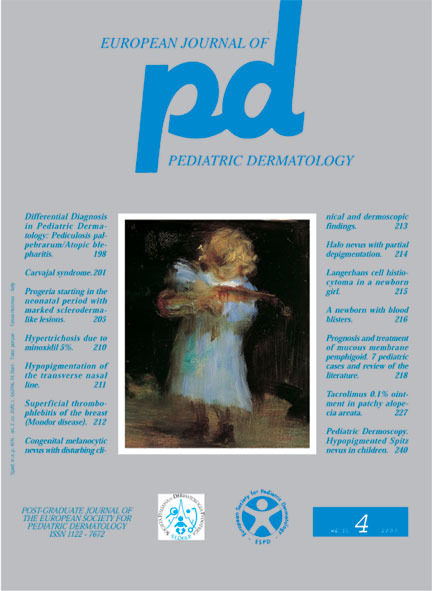Pediatric dermoscopy. Hypopigmented Spitz nevus in children.
Downloads
How to Cite
Bonifazi E., Ciampo L., Milano A., Argenziano G. 2007. Pediatric dermoscopy. Hypopigmented Spitz nevus in children. Eur. J. Pediat. Dermatol. 17 (4): D33-D48.
pp. D33-D48
Abstract
Spitz nevus is an acquired melanocytic nevus characterized clinically by an angioma-like appearance and rapid tridimensional growth, histologically by large spindle and/or epithelioid cells and dermoscopically by regularly distributed dotted or comma vessels. The melanic pigment is scarce or almost absent. Discussed is its relationship with Reed nevus, a melanocytic acquired nevus characterized clinically by intense pigmentation and rapid radial growth, histologically by large spindle and/or epithelioid cells and dermoscopically by a starburst, globular, multicomponent or atypical pattern. Between Spitz nevus and Reed nevus transition forms do exist. Moreover, there are Spitz and Reed nevi present at birth, the former usually in the agminated or with multiple element variant. Spitz nevus is under discussion since 1948, when the Author, after whom it has been named, realized that melanoma in children had a favorable prognosis. A few years later melanoma with favorable prognosis turned into a fully benign tumor, namely a nevus for all practical purposes. The discussion on the sometimes insurmountable difficulties in differentiating histologically Spitz nevus from Spitz-like melanoma is still open today. However, the age is certainly a discriminating criterion, given the exceptionality of melanoma in children and of Spitz nevus in elderly.Keywords
Pediatric dermoscopy, Spitz nevus

